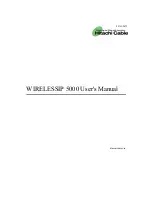
144
Gigaset C530 IP / LUG - USA en / A31008-XXXXX-XXXX-X-XX / Glossary.fm / 25.03.2015
Te
mplat
e
B
o
rn
eo
, V
e
rs
ion 1
, 21.
06
.2
012
Glossary
E
ECT
Explicit Call Transfer
Participant A calls participant B. The participant puts the connection on hold and calls
participant C. Rather than connect everyone in a three-participant conference, A now
transfers participant B to C and hangs up.
EEPROM
Electrically Erasable Programmable Read Only Memory
Memory building block in your phone with fixed data (e.g. default and customised settings)
and data saved automatically (e.g. call list entries).
Ethernet network
Wired
F
Firewall
You can use a firewall to protect your network against unauthorised external access. This
involves combining various measures and technologies (hardware and/or software) to
control the flow of data between a private network you wish to protect and an unprotected
network (e.g. the Internet).
See also:
Firmware
Device software in which basic information is saved for the functioning of a device. To correct
errors or update the device software, a new version of the firmware can be loaded into the
device's memory (firmware update).
Fixed IP address
A fixed IP address is assigned to a network component manually during network
configuration. Unlike the
, a fixed IP address does not change.
Flat rate
System of billing for an
connection. The Internet provider charges a set monthly fee.
There are no additional charges for the duration of the connection or number of
connections.
Fragmentation
Data packets that are too big are split into smaller packets (fragments) before they are
transferred. They are put together again when they reach the recipient (defragmented).
Full duplex
Data transmission mode in which data can be sent and received at the same time.
G
G.711 a law, G.711 μ law
Standard for a
G.711 delivers a very good voice quality that corresponds to that in the ISDN network. As
there is little compression, the necessary bandwidth is around 64 kbit/s per voice
connection, but the delay caused by coding/decoding is only approx. 0.125 ms.
"a law" describes the European standard and "μ law" describes the North American/Japanese
equivalent.
















































